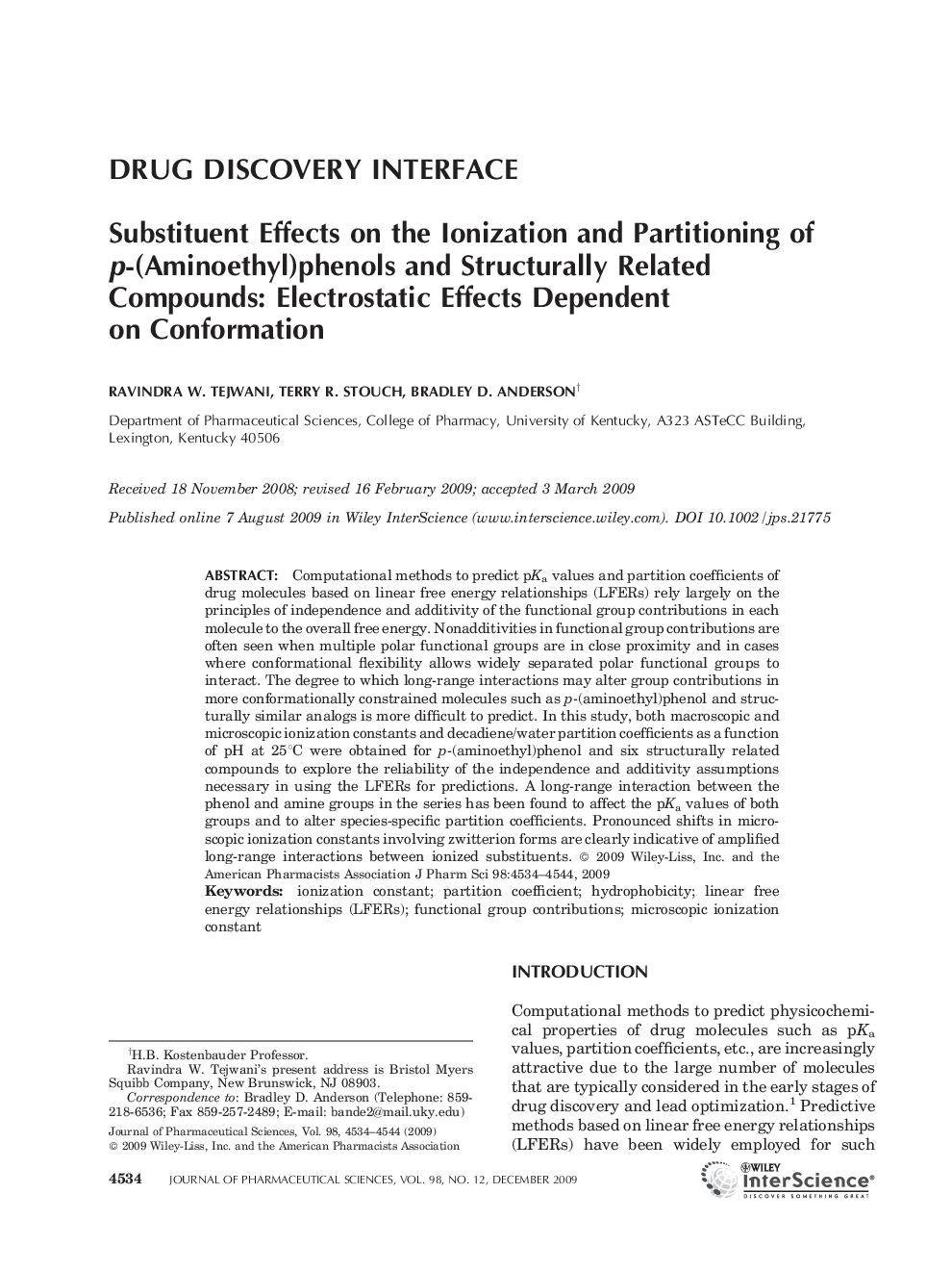| Article ID | Journal | Published Year | Pages | File Type |
|---|---|---|---|---|
| 2486567 | Journal of Pharmaceutical Sciences | 2009 | 11 Pages |
Abstract
Computational methods to predict pKa values and partition coefficients of drug molecules based on linear free energy relationships (LFERs) rely largely on the principles of independence and additivity of the functional group contributions in each molecule to the overall free energy. Nonadditivities in functional group contributions are often seen when multiple polar functional groups are in close proximity and in cases where conformational flexibility allows widely separated polar functional groups to interact. The degree to which long-range interactions may alter group contributions in more conformationally constrained molecules such as p-(aminoethyl)phenol and structurally similar analogs is more difficult to predict. In this study, both macroscopic and microscopic ionization constants and decadiene/water partition coefficients as a function of pH at 25°C were obtained for p-(aminoethyl)phenol and six structurally related compounds to explore the reliability of the independence and additivity assumptions necessary in using the LFERs for predictions. A long-range interaction between the phenol and amine groups in the series has been found to affect the pKa values of both groups and to alter species-specific partition coefficients. Pronounced shifts in microscopic ionization constants involving zwitterion forms are clearly indicative of amplified long-range interactions between ionized substituents. © 2009 Wiley-Liss, Inc. and the American Pharmacists Association J Pharm Sci 98:4534-4544, 2009
Related Topics
Health Sciences
Pharmacology, Toxicology and Pharmaceutical Science
Drug Discovery
Authors
Ravindra W. Tejwani, Terry R. Stouch, Bradley D. Anderson,
